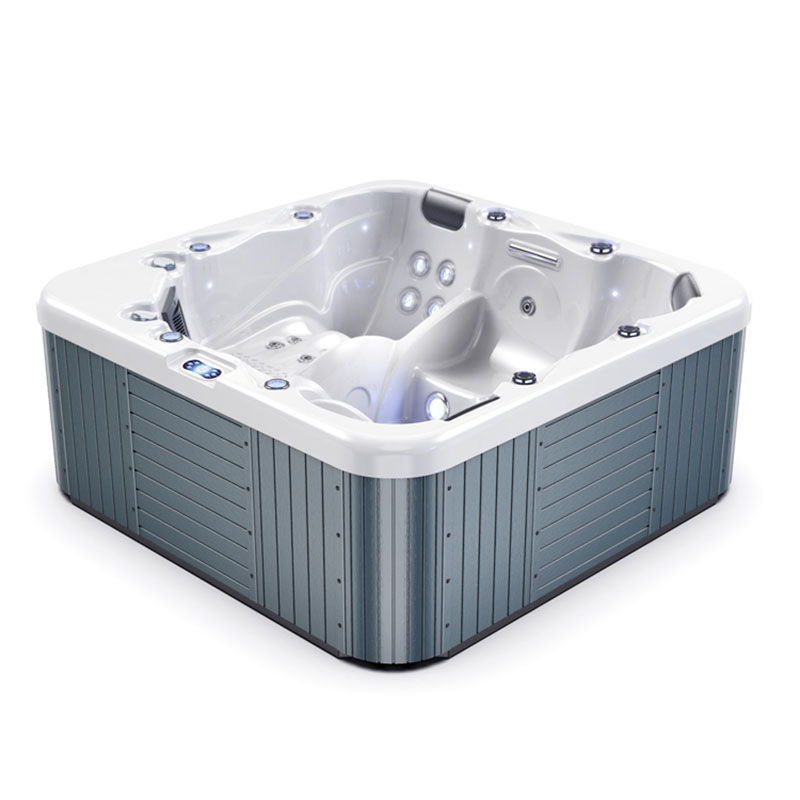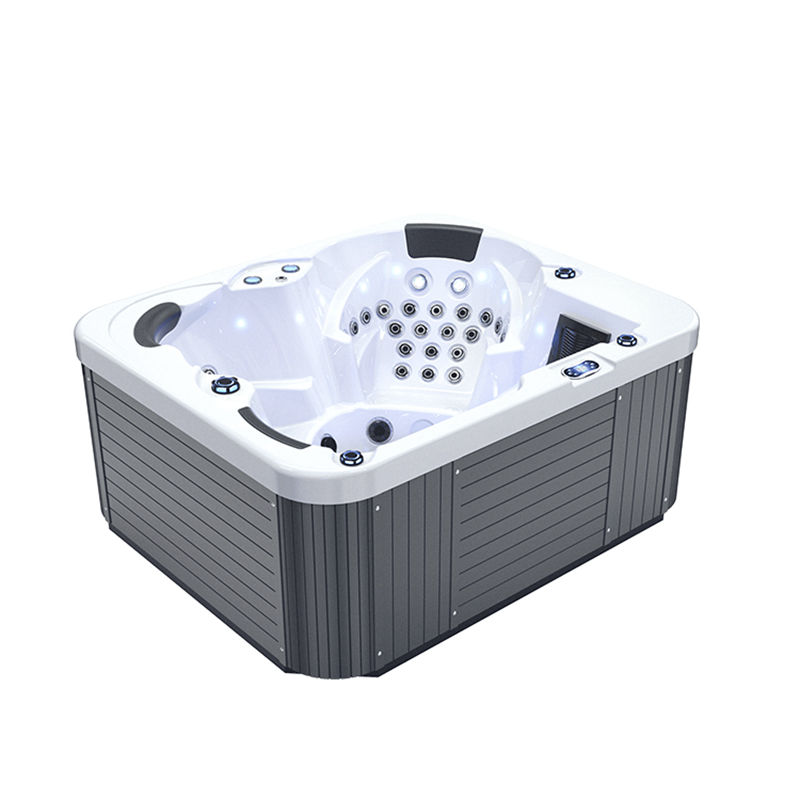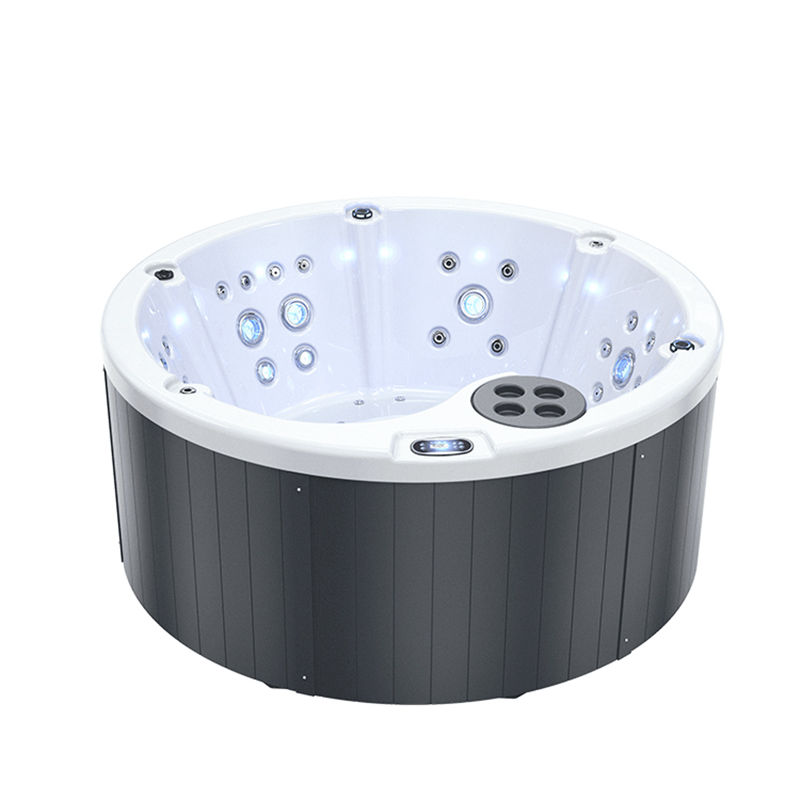In the field of modern home and health and leisure, hot tubs, spa tubs, and jacuzzi tubs have become popular choices for many consumers. However, although the names of these bathtubs sound similar, they have significant differences in function, design, and user experience. For those who want to improve the quality of home life or seek physical and mental relaxation, it is important to understand the differences between these bathtubs.
This article will explore the differences between hot tubs, spa tubs, and jacuzzi tubs in detail from multiple perspectives to help consumers make wise choices.
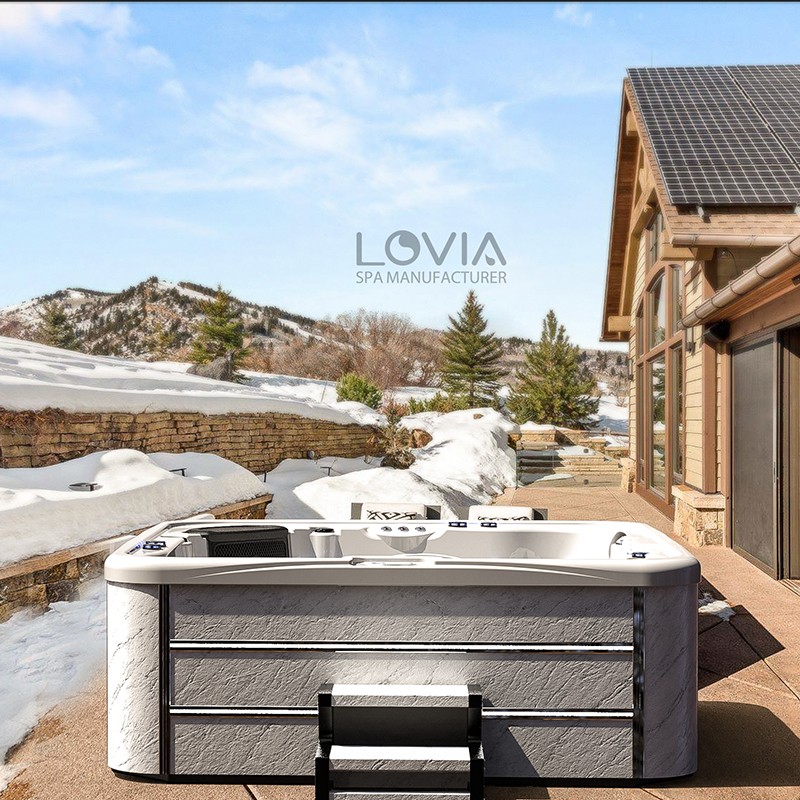
What is a hot tub?
A hot tub, also known as a "hot spring bathtub," usually refers to a larger outdoor bathtub that can accommodate multiple people at the same time. This type of bathtub usually has a heating function to keep the water temperature constant between 38°C-40°C, providing a long warm water soaking experience. The hot tub originated from the concept of natural hot springs, with the purpose of relaxing muscles and promoting blood circulation through the effect of warm water. Modern hot tubs are usually equipped with multiple nozzles to produce a slight water flow and bubble massage effect.
What is a spa tub?
A spa tub is a bathtub that combines massage and relaxation effects. It is designed to achieve a spa-like health and therapeutic effect through the action of water flow and bubbles. Similar to a hot tub, a spa tub can also be heated, but it focuses more on the control of water flow and bubbles, providing a more precise massage function. Spa tubs can be used for home installations and are also common in high-end hotels and spas.
What is a jacuzzi tub?
A jacuzzi tub, also known as a "whirlpool bathtub," is usually installed in an indoor bathroom and can provide a bathing experience for one or two people. The core feature of a jacuzzi tub is that it has multiple built-in nozzles, which can be pumped out at high speed to form strong water flow and bubbles for targeted massage of specific parts of the body. A jacuzzi tub is usually more compact than a hot tub and a spa tub, and is suitable for daily home use.
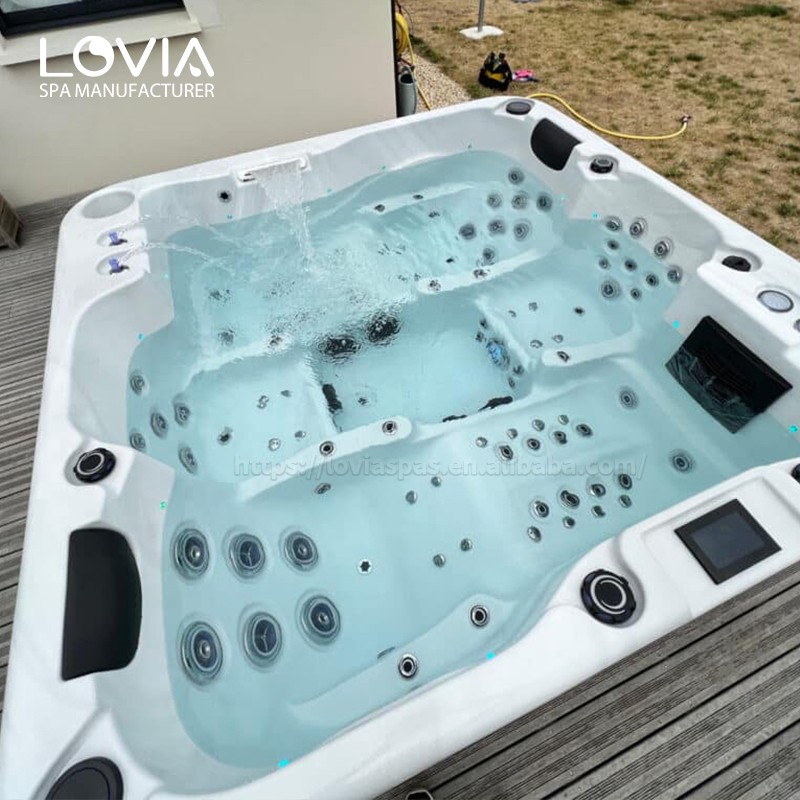
What is the difference between a hot tub, a spa tub, and a jacuzzi tub?
4 major differences between hot tubs, spa tubs, and jacuzzi tubs:
1. Differences in function and design
2. Differences in installation location and applicable scenarios
3. Differences in user experience
4. Differences in maintenance and cost
Differences in function and design
Function and design features of hot tubs
The design of hot tubs focuses on the long-term soaking experience. Its basic function is to heat the water at a constant temperature, allowing users to relax in warm water. The design of hot tubs is relatively simple, usually with multiple seats, allowing multiple people to use it at the same time. Although some modern hot tubs have added water jets and bubble functions, their massage effect is relatively gentle and not as strong as spa tubs and jacuzzi tubs.
The core feature of hot tubs is their comfortable warm water environment, not the massage effect of water flow. This bathtub design is inspired by natural hot springs, so it is more suitable for relieving stress and promoting overall relaxation.
Function and design features of spa tubs
The function of spa tubs is not limited to warm water soaking. Its design focuses on achieving full-body massage through multiple water flow modes and bubbles. The arrangement of the jets in the spa tub is more sophisticated, and they can precisely target key parts of the human body, such as the back, shoulders, waist and legs. Users can adjust the intensity and spray angle of the water flow to enjoy a massage effect similar to that of a professional spa.
In addition, the water flow in the spa tub can be more complex, usually with multiple massage programs, such as pulse, wave, etc., imitating various massage techniques to achieve the effect of deep muscle relaxation. Therefore, the spa tub is not only a tool for relaxation, but also can be used for health therapy to relieve muscle pain and joint problems.
Functions and design features of jacuzzi tub
The design of the jacuzzi tub is relatively more compact and is usually suitable for single or double use. Its biggest feature is the strong water flow and bubbles, which directly act on specific parts of the body through the jets to form a local vortex massage. The layout of these jets can be concentrated on parts such as the back, neck and feet, providing strong water pressure massage to help users relieve muscle tension and fatigue.
Unlike the spa tub, the massage effect of the jacuzzi tub is more concentrated and powerful, and the design of the jets is also more inclined to provide a strong massage in a short period of time, rather than a long-term water flow massage. In addition, jacuzzi tubs are usually installed in family bathrooms and occupy a small area, becoming a functional upgrade for daily bathing.
Differences in installation location and applicable scenarios
Hot tub: Outdoor relaxation place
Due to its large size, hot tubs are usually installed outdoors, such as in courtyards, balconies or terraces. It is suitable for multiple people to use at the same time, especially for relaxation after family gatherings or friends' dinners. Since hot tubs need to maintain a high water temperature and have a large water volume, their installation and maintenance costs are relatively high.
In addition, the outdoor installation of hot tubs also requires a certain degree of privacy and wind and rain protection facilities. Therefore, it is more suitable for users who have a large outdoor space and focus on social relaxation experience.
Spa tub: The choice of high-end spa experience
Spa tubs are usually installed in dedicated bathrooms or spa rooms in the home, and can also appear in high-end hotels and resorts. Due to its complex design and rich functions, spa tubs are suitable for users who pursue professional massage effects. Whether it is for daily use or as part of health treatments, spa tubs can provide a relaxing experience for the body and mind.
The installation of spa tubs requires a large space, and due to its diverse functions, it usually requires professional installation and maintenance.
Jacuzzi tub: ideal for daily home use
In contrast, jacuzzi tubs are usually smaller and suitable for installation in ordinary family bathrooms. It is the most common massage bathtub in the home. It not only provides daily bathing functions, but also helps relieve physical fatigue through whirlpool massage. Due to its compact design and strong massage effect, jacuzzi tub has become the first choice for many families in bathroom upgrades.
Installing a jacuzzi tub usually does not require too much space or complex engineering. It is more like an enhanced version of a traditional bathtub, suitable for those who pursue convenience and relaxation in daily life.

Difference in user experience
The user experience of hot tub: relaxation and socializing
The experience of hot tub is more of a combination of relaxation and socializing. The warm water flow and comfortable seat design allow users to soak for a long time while communicating and interacting with family and friends. Due to its mild massage effect, hot tub is more suitable for those who seek relaxation and decompression, rather than those who need strong massage effects.
The biggest highlight of hot tub is its atmosphere, especially at night or in cold weather, outdoor hot tub can bring the ultimate comfort experience.
The spa tub experience: professional massage and therapy
The spa tub is designed to allow users to enjoy a professional massage experience similar to that of a spa at home. By adjusting the intensity and direction of the water flow and bubbles, users can customize their massage experience. Whether it is to relieve muscle soreness, reduce joint pressure, or simply relax, the spa tub can provide a full range of massage effects.
For those who suffer from chronic pain or sports injuries, the functionality of the spa tub is particularly important. It is not only a relaxation tool, but also a part of health therapy.
The jacuzzi tub experience: efficient short-term massage
The jacuzzi tub experience focuses on strong local massage. With high-speed jets of water, users can get efficient muscle relaxation in a short time. This bathtub is more suitable for those who need to quickly decompress in their daily lives, such as busy professionals or fitness enthusiasts who need to recover after exercise.
Although the jacuzzi tub is small in size, its water flow intensity and vortex effect often bring a deep relaxation experience, making it a very practical health device in the home.
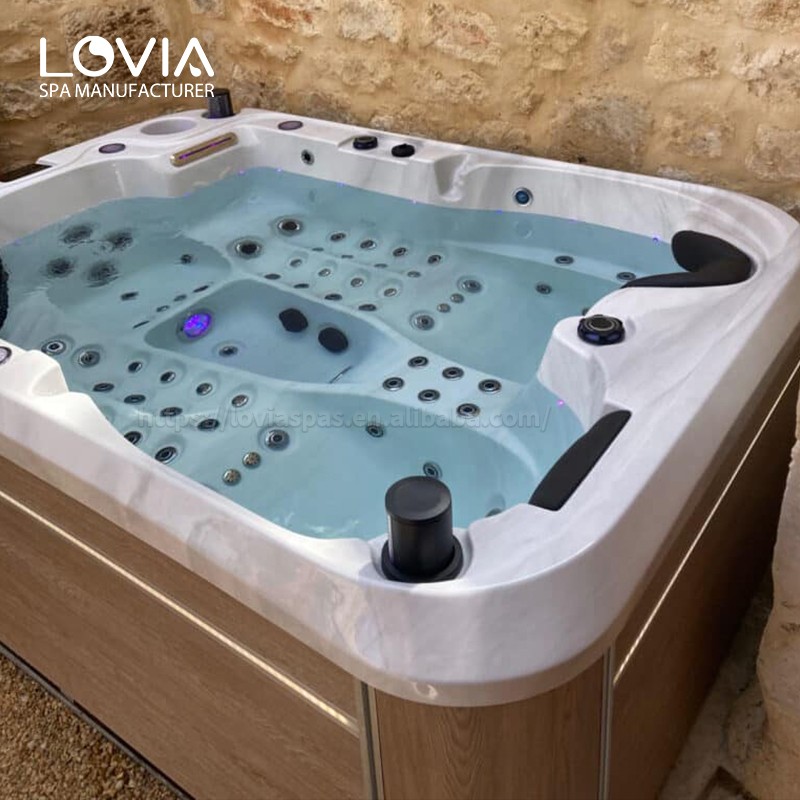
Maintenance and cost differences
Hot tub maintenance and cost
Hot tub maintenance is relatively complex because it requires regular cleaning of the filter, water quality control, and ensuring that the heating system is working properly. In addition, due to the large capacity of the hot tub, water replacement and cleaning also takes more time and money.
Spa tub maintenance and cost
Spa tub maintenance is equally complex, especially for high-end models with multiple functions. In addition to cleaning and water quality maintenance, the nozzles and water flow system also need regular inspection and maintenance to ensure their massage effect.
Jacuzzi tub maintenance and cost
Jacuzzi tub maintenance is relatively simple. Users only need to regularly clean the nozzles and the inner wall of the tub and ensure that the water pump is working properly. Due to its small size, the cost of water replacement and cleaning is also low.


